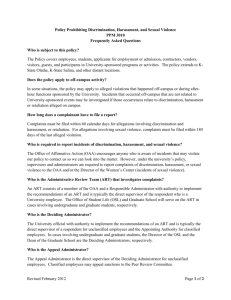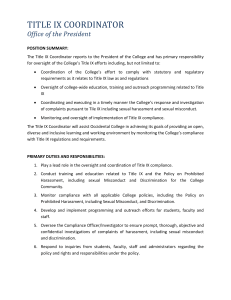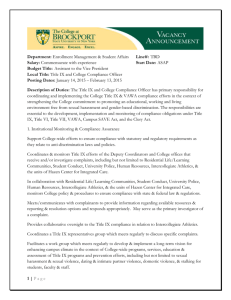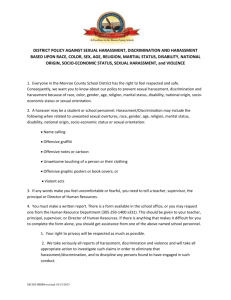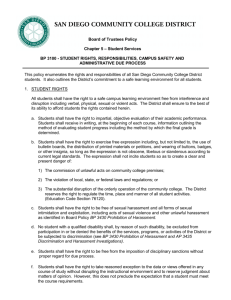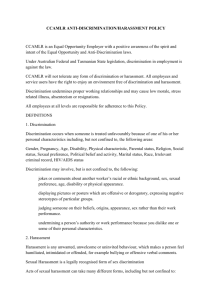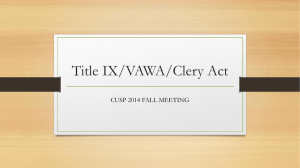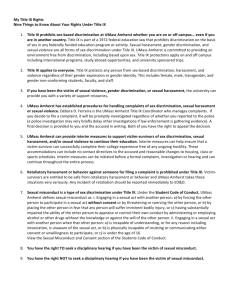Title IX: Past, Present, and Future
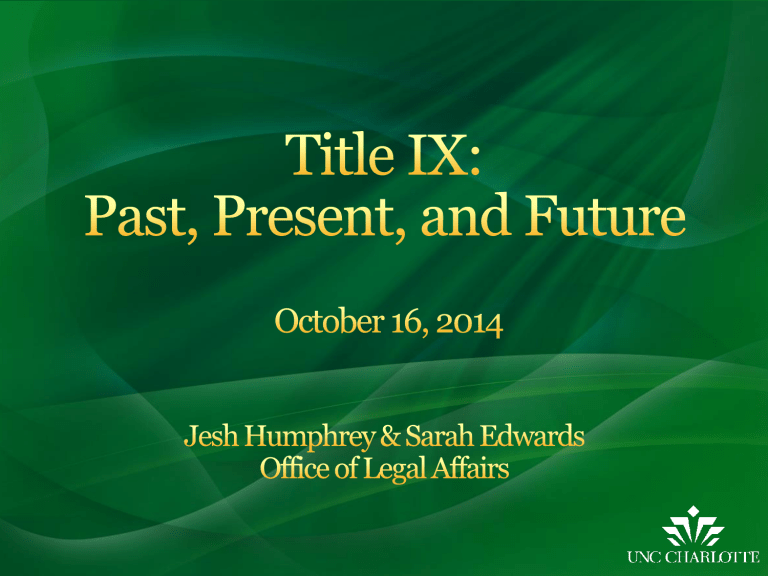
1964: Title VII of the Civil Rights Act of 1964 is enacted, prohibiting discrimination in employment based on race, color, sex, national origin, or religion. Title VI of this Act prohibits discrimination in federally assisted programs—including education programs—on the basis of race, color and national origin, but not on the basis of sex.
1970: Congress holds first hearings on sex discrimination in higher education.
1972: Title IX of the Education Amendments of
1972 is enacted, prohibiting discrimination on the basis of sex in all federally funded education programs and activities.
“No person in the United States shall, on the basis of sex, be excluded from participation in, be denied the benefits of, or be subjected to discrimination under any education program or activity receiving Federal financial assistance,” except:
Religious institutions
Military institutions
Historically single-sex institutions
Fraternities/Sororities
Note: no mention of sports
1972: President Nixon directs the Department of
Health, Education and Welfare (HEW) to create implementing regulations.
1974: Freaking Out, Part 1 - Tower Amendment and Javits Amendment introduced, NCAA rallies for congressional support.
June, 1975: HEW issues, and President Ford signs,
Title IX regulations.
June - July, 1975: Freaking Out, Part 2 - Multiple resolutions submitted to disapprove regulations, Tower
Amendment re-introduced, other revenue sport legislation introduced.
July, 1975: Regulations become effective.
1976: NCAA lawsuit against HEW is dismissed.
1977: 2d Cir. Court of Appeals rules that sexual harassment is sex discrimination under Title VII;
Tower Amendment re-introduced.
1979: HEW issues “Title IX and Intercollegiate
Athletics” Policy Interpretation
Addresses three major areas of historical gender inequity within intercollegiate athletics:
Athletic scholarships
Athletic program components
Participation opportunities
“Effectively accommodate the interests and abilities of both sexes,” the “three-prong test”:
Proportionality
Program expansion
Full and effective accommodation
From its inception to 2011, collegiate athletics dominated the Title IX landscape/discussion:
1980: Federal education responsibilities transferred from HEW to Department of Education.
1984: Supreme Court rules that Title IX applies only to the specific programs within an institution that receive targeted federal funds.
1988: Congress passes Civil Rights Restoration Act over President Reagan’s veto.
Office for Civil Rights issues further guidance for administrators in 1990, 1996, 1998, 2003, 2005, and 2010.
To little fanfare, the OCR begins to address student-on-student sexual harassment:
1997: “Sexual Harassment Guidance: Harassment of Students by School Employees, Other Students, or Third Parties.”
1999: Supreme Court rules that Title IX applies to student-on-student sexual harassment and that damages against school can be awarded.
2001: “Revised Sexual Harassment Guidance”
2011: OCR Dear Colleague Letter
2013: Violence Against Women Reauthorization
Act
2014: OCR Questions and Answers
2014: White House Task Force Report called
“Not Alone”
Concepts from 2001 guidance:
Policy against sex discrimination
Grievance procedures for complaints
Title IX Coordinator
Student-on-student conduct
Responsible Employees
Prompt and equitable resolution
Criminal investigation separate
In other words, “we really meant what we said!”
New concepts:
Sexual violence
“Prompt” = 60 calendar days
Preponderance of the evidence
More detail/explanation
- Title IX coordinator
- training efforts
- possible remedies
- criminal investigations
Reauthorized in 2013
Campus Sexual Violence Elimination Act (Campus SaVE
Act)
Requires:
Prevention and awareness programs for incoming students and new employees
Written information to victims of sexual assault, domestic violence, dating violence, and stalking
Certain procedural protections – advisor of choice, fair and impartial process, trained investigators and hearing panel members, etc.
Codified much of the 2011 DCL
Congress specifically chose to leave the standard of evidence silent
Competing perceptions:
Some people think universities do not care about these issues and only want to protect their reputations
Others are concerned that universities are stepping too far into criminal/police work
More leeway to respect confidentiality
More emphasis on training
Other populations – same sex relationships, international students, student with disabilities, etc.
Clarification – Take Back the Night, Resident
Advisors, 60-day timeframe, etc.
White House task force
20 pages (but links to other resources)
Encourages:
More transparency from Dept. of Education
Campus climate surveys (with toolkit)
Better prevention (including http://www.whitehouse.gov/1is2Many )
More control for survivors
Model protocols and policies
McCaskill report (July 2014) – “many institutions are failing to comply with the law and best practices in how they handle sexual violence among students”
Three federal bills pending:
Campus Accountability and Safety Act (CASA)
Survivor Outreach and Support (SOS) Campus Act
Hold Accountable and Lend Transparency (HALT) Act
State legislation
CASA
Specially-trained confidential advisor(s) for victims
MOU with law enforcement
Campus climate surveys (public results)
Partnerships with community organizations
Amnesty for drug/alcohol violations
SOS Campus Act
Independent advocate for victims
HALT Act
OCR investigations
71 institutions under investigation
Pendulum swing
Some media attention on accused students
Lawsuits by accused students
- Not afforded due process
- Administrators rushed to judgment
Harvard law professors’ letter
State legislation
Does the “preponderance of the evidence” standard satisfy due process?
Will the pendulum eventually come to rest in the center, or will it continue to swing?
What will happen when a new administration arrives in DC (Jan. 2017)?


